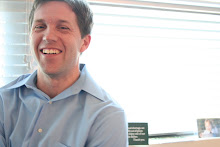Here‘s the short answer – heck yes.
Here’s a more thought out answer -
Advertising is without a doubt the one marketing element that receives the most attention and most dollars. It has the responsibility of taking all the other elements of the marketing mix and crafting a persuasive message to sum it all up.
Branding is more than a function of advertising. It should be a function of business. It’s permeates all elements of sales & marketing.
Let’s look at the traditional 4P’s of marketing and see how they can affect branding.
Product – We all know product is king. It dictates your brand offering. The way you shape the touch, taste, sound, smell, name or experience of your product is branding. Calling your Kentucky-based fried chicken company Kentucky Fried Chicken is branding. Changing it to KFC to lessen the negative affects of health conscious consumers is also branding. So is the really cool buckets they come in.
Price – Your price tells customers whether you are a premium brand great reward or an inexpensive value brand. You can buy a .99 cup of coffee or a $4 cup.
Place (distribution) – The way you deliver your sales experience is everything about your brand. The fact that a fast-food restaurant can be found everywhere is branding. Your website’s appearance is branding (the role of websites today are no longer interactive brochures – they are a company’s 24 hour visitor center). If it were not, we’d all have plain type on white backgrounds for our websites.
Promotion - Okay, this is what people really think of when they think of marketing. It includes advertising, direct marketing, online media, events – heck anything that allows you to tell other people about your product-service. The way you say it is branding. A cardboard sign with a handwritten message that says “Fresh Corn” is branding. So is the same message typed out on a digital billboard or neon sign. Which one would you buy from?
Not only should the advertising program be teaching it, but it should make its way into other areas of study like public relations, fashion design, interior design, hospitality management or restaurant management.
There.














